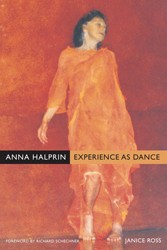This large-format, sumptuously illustrated anthology fulfills the visual promise made in the title; the reader truly “sees” the dance on the pages, not only in the photographs but in the words that swirl and twirl out of the stories in the wide range of essays that comprise the book. Ingber, a dancer, dance scholar, and choreographer, has created a remarkable collection of commentary that combines academic thinking with the viewpoints of the dancers themselves. A wide variety of Jewish dance styles are included, emanating from Europe, Israel and other Middle East countries, Africa, and the Americas and covering over two thousand years of dance evolution in Diaspora communities. The writing is as full of vitality as the artists and artistic expressions it covers.
A broad range of times, places, and styles of dance are explored, including both ancient and modern Israeli folk dance and current theatre performance and traditions of Hasidic, Yemenite, Kurdish, Ethiopian, and European dance are examined. Ingber defines Jewish dance as encompassing a full range of artistic expression, including community or ethnic folk dance, religious ritual dance, and choreographed performances. With over 180 illustrations, the volume is richly decorated, and each of the pieces of art is carefully annotated. The eighteen highly credentialed contributors pose and then answer – each in his or her own individual way – such intriguing questions as what makes dance Jewish, how dance enhances Judaism and Jewish identity, and how the different genres of dance changed over time. Bibliography, contributors, glossary, index, notes.
Linda F. Burghardt is a New York-based journalist and author who has contributed commentary, breaking news, and features to major newspapers across the U.S., in addition to having three non-fiction books published. She writes frequently on Jewish topics and is now serving as Scholar-in-Residence at the Holocaust Memorial & Tolerance Center of Nassau County.




